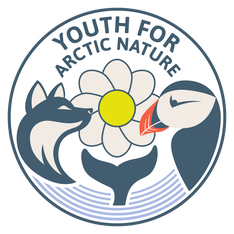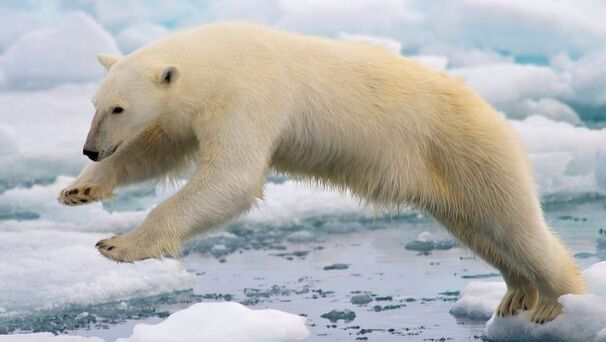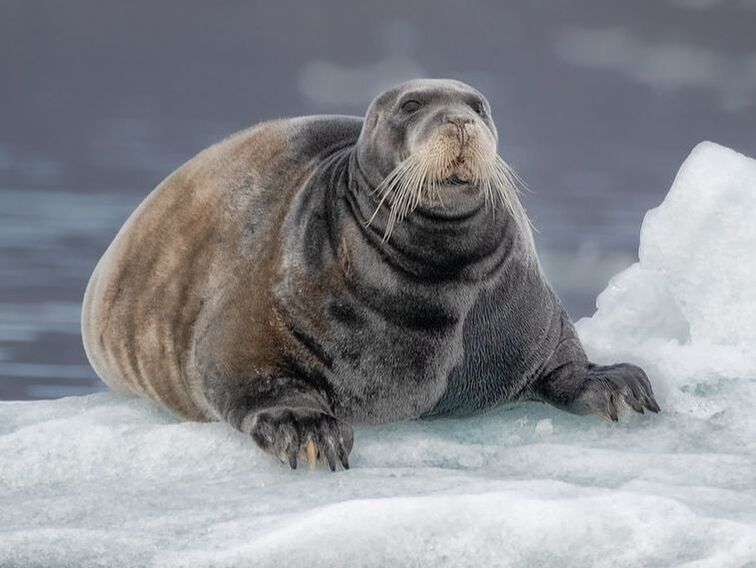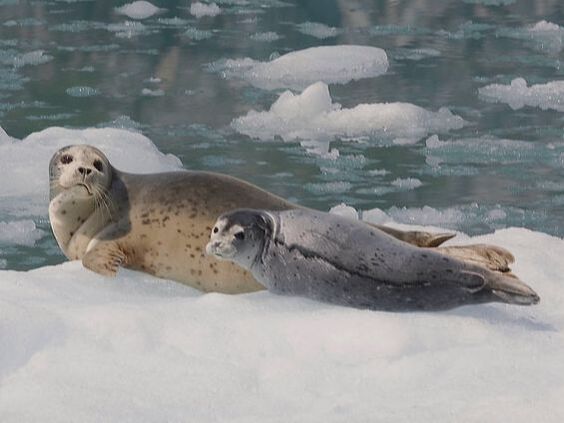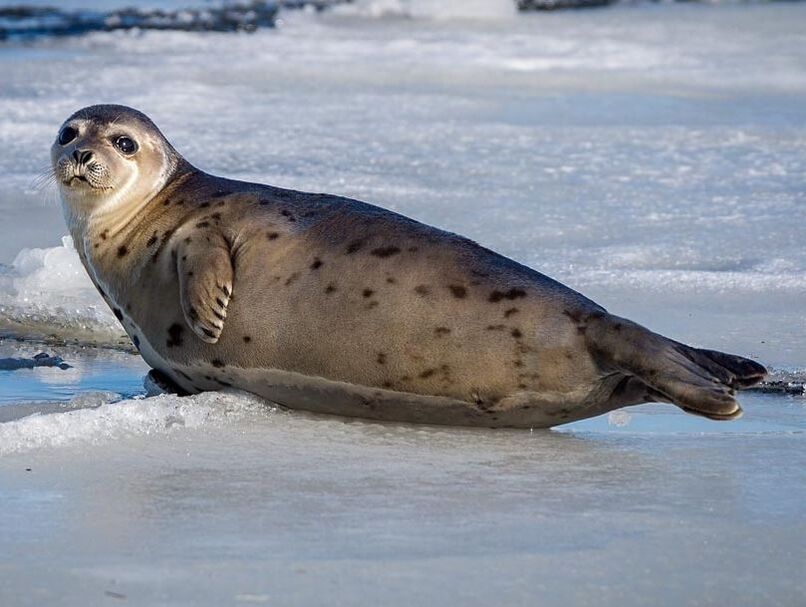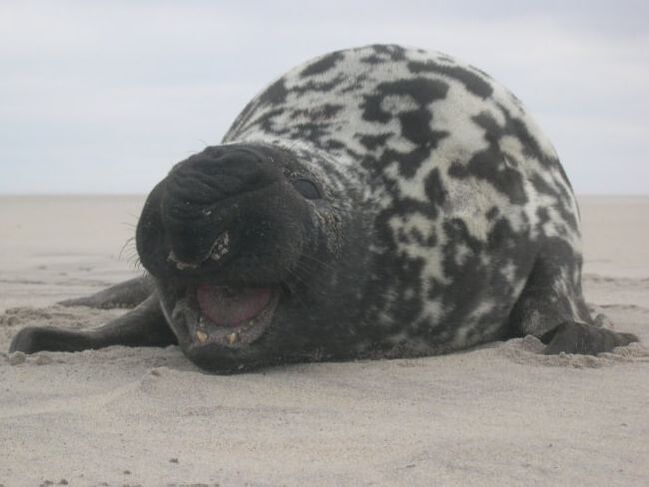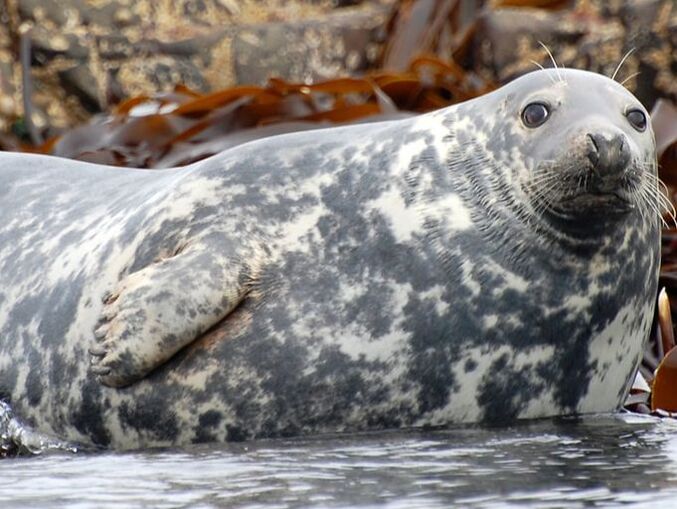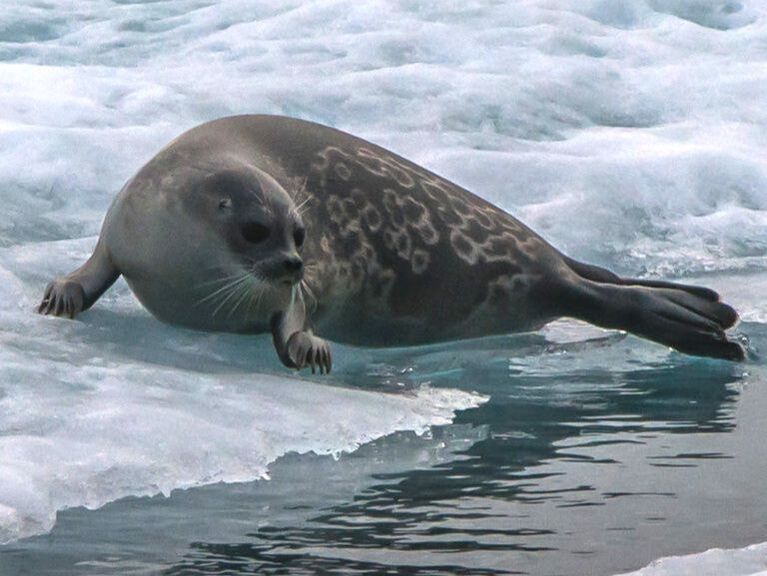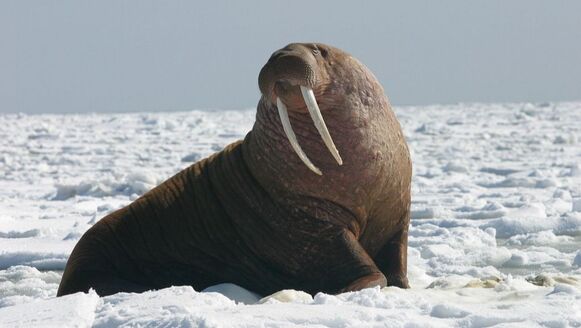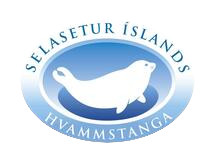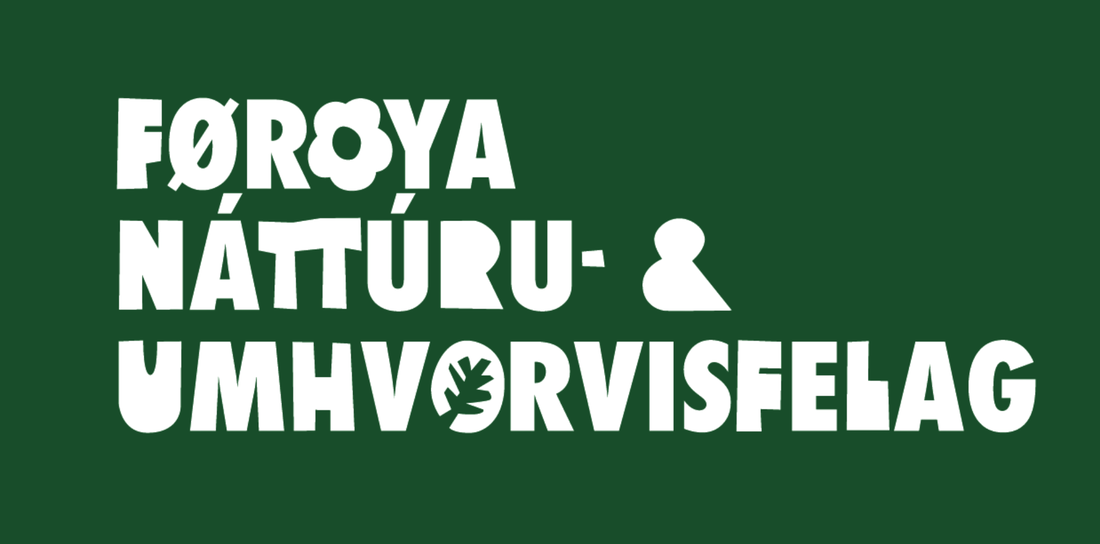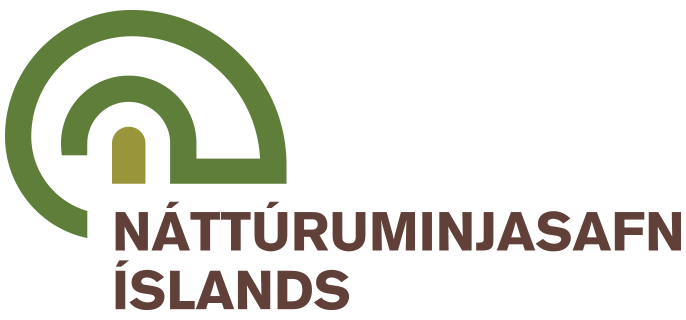The following is a complete list of native carnivoran species found in the East Atlantic Arctic. Carnivora is an order of mammals that are specialized in mostly eating other animals, like tigers, hyenas, dogs, ferrets, and bears. Carnivorans can also be omnivores (meaning they eat other animals as well plants) like the brown bear for example. Native East Atlantic Arctic marine carnivorans include the following families and species.
|
The Polar bear Ursus maritimus. This species is found in Siberia, northern Canada, Alaska, Greenland, and Svalbard. Very rarely, it has been found to drift to Iceland, but these animals never survive. The last one was found near an abandoned farm in northern Iceland in 2016.
Although this animal is rarely thought of as a marine mammal, it lives the majority of its life on sea ice or in water so it is classified as one. |
Seals are members of the Pinniped clade in the Carnivoran order. They are carnivorous semi-aquatic mammals who have evolved to possess fins and thick blubber. East Atlantic Arctic seal species include members of two of the three families that make up the pinnipeds.
Members of the Phocidae family are called "True seals". They don't have visible ears, and they are mostly found in temperate to Arctic climates. Six species of true seals can be found in the East Atlantic Arctic:
- The Bearded seal Erignathus barbatus. It is found all around the Arctic in Asia and North America including Greenland, but only in the extreme north of Norway in Europe.
- The Harbor seal Phoca vitulina. In the Pacific, it is found from the southern US and the north of Japan to the Aleutian Islands south of Alaska. In the Atlantic, it is present on the eastern coast of North America, southern Greenland, around Iceland, the South of Svalbard, and northern Europe.
- The Harp seal Pagophilus groenlandicus. It is found in the waters of the Arctic ocean, around Greenland, on the northeastern coast of Canada, and in the White Sea north of Russia.
- The Hooded seal Cystophora cristata. It has been found all around Iceland although this is rare, and it is present around Greenland, Svalbard, and the northeastern coast of Canada.
- The Grey seal Halichoerus grypus. It is found in northeastern North America but not in Greenland. It is also present in northern Europe including the Baltic sea, and around Iceland.
- The Ringed seal Pusa hispida. The smallest and most common seal in the Arctic, it is circumpolar but is rarely seen in Iceland.
The Walrus Odobenus rosmarus is the only living member of the Odobenidae family. The largest Arctic pinnipeds, they are separated in five populations: northeastern Canada and western Greenland, eastern Greenland, around Svalbard and Novaya Zemlya (Russia), in the Laptev sea (Russia), and in the Bering sea between Russia and Alaska. In Iceland, a walrus was seen recently in September 2021, which is very rare.
|
Walrus
|
Pictures
- "Walrus Cow and Calf" by USFWSAlaska is licensed under CC BY-NC-ND 2.0
- "Polar Bear Jumping- Arturo de Frias Marques" by Bering Land Bridge National Preserve is licensed under CC BY-SA 2.0
- "Bearded Seal" by alicecahill is licensed under CC BY-NC-ND 2.0
- "Harbor Seal (Phoca vitulina)" by Gregory 'Slobirdr' Smith is licensed under CC BY-SA 2.0
- "Harp seal-4" by Gene Herzberg is licensed under CC BY 2.0
- "Cystophora cristata - hooded seal" by Sea Mammal Research Unit (SMRU) is licensed under CC BY-NC-SA 4.0
- "File:Farne Grey seal (cropped).jpg" by Steenbergs is licensed under CC BY 2.0
- "Ring Seal" by RayMuzyka is licensed under CC BY-NC-SA 2.0
- "Harbor Seal Pup" by brentdanley is licensed under CC BY-NC-SA 2.0
- "Polar bear on the rock" by Tambako the Jaguar is licensed under CC BY-ND 2.0
- "Ringed seal" by dracophylla is licensed under CC BY-NC-SA 2.0
References
Brodie, Paul (1984). Macdonald, D. (ed.). The Encyclopedia of Mammals. New York: Facts on File. pp. 200–203. ISBN 978-0-87196-871-5.
- Clapham 2002, pp. 589–592.
- Jefferson, T.A., Webber. M.A., and Pitman, R.L. (2015). Marine Mammals of the World: A Comprehensive Guide to Their Identification (2nd edition). Academic Press: San Diego.
- Joergensen, M. (2007). First photographed observation of the harbour porpoise (Phocoena phocoena) in Svalbard. Polar Record, 43(1), 73–74. https://doi.org/10.1017/S0032247406236064
- Lockyer C (1976). "Body weights of some species of large whales". J. Cons. Int. Explor. Mer. 36 (3): 259–273. doi:10.1093/icesjms/36.3.259.
- Reeves, Randall (2008). Guide to Marine Mammals of the World. New York: National Audubon Society. pp. 398–401. ISBN 978-0375411410.
